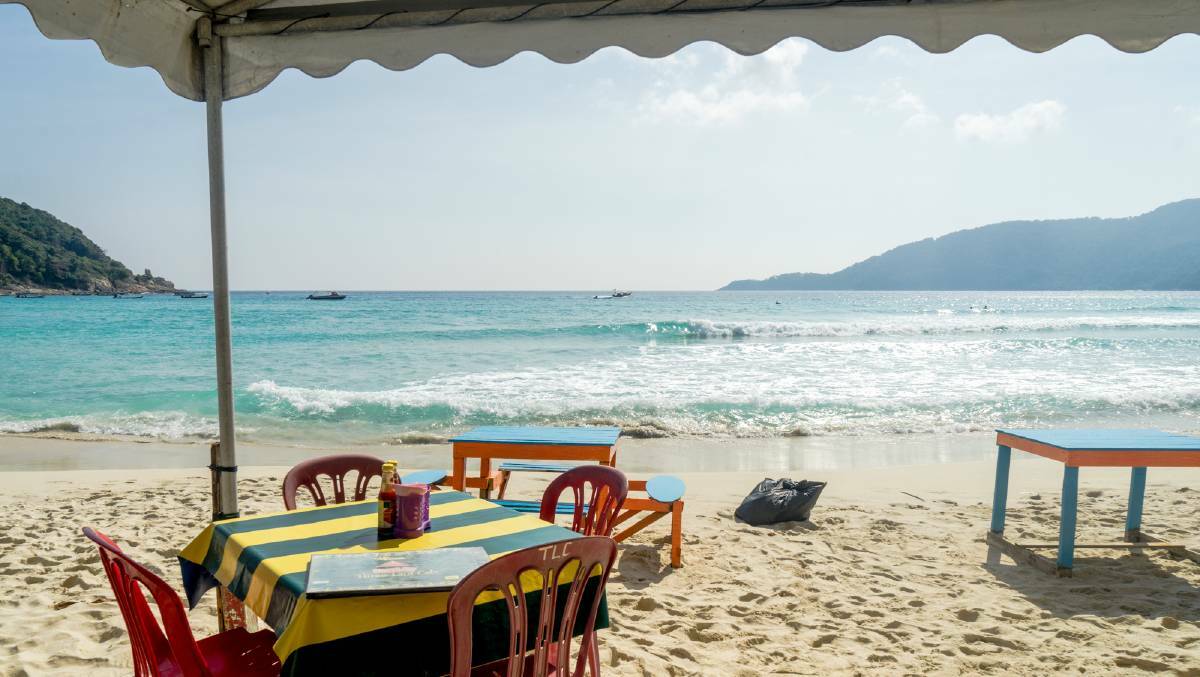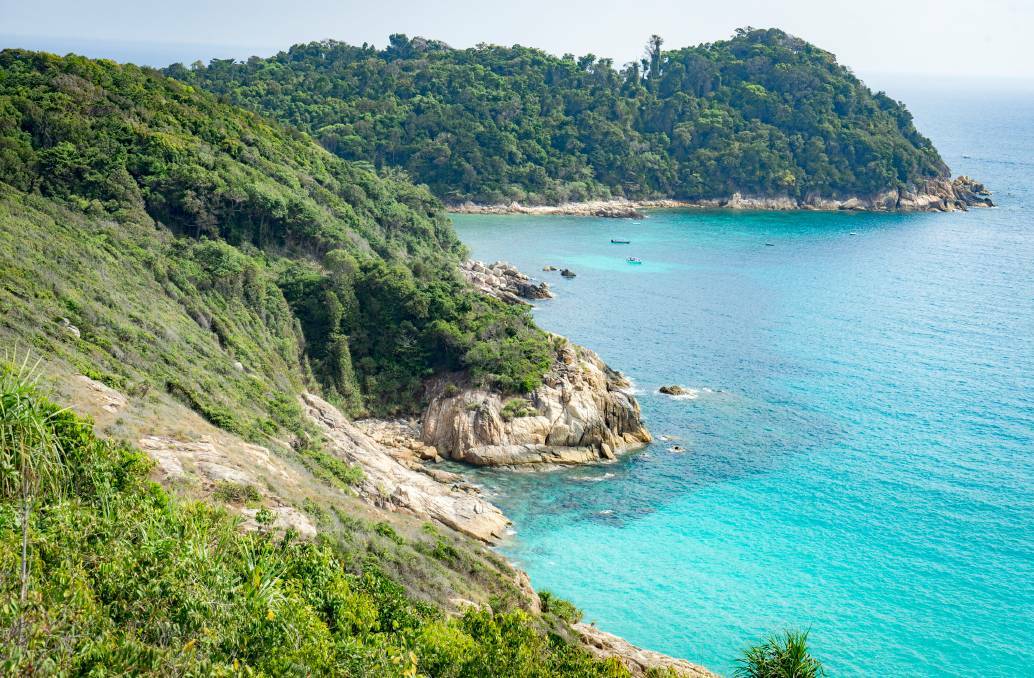It took me a little while to realise that I was hearing something strange – and then even longer to work out what it was. It wasn’t obvious at first, the kind of thing your subconscious catches onto much earlier but only delivers to the top of your mind when you pause for a moment. And, in this case, it was quite subtle. It wasn’t noise that I was hearing, but rather the lack of noise – no traffic to be exact.
Create a free account to read this article
$0/
(min cost $0)
or signup to continue reading
Here on one of Malaysia’s Perhentian Islands, there are no roads and, hence, no cars. The sound of the water softy lapping against the sand is the closest you get to the general hum of life that normally surrounds us. I relax into the rhythm and wonder why I had never heard of this corner of the tropics before.
Perhaps it’s because Malaysia’s islands aren’t quite as well-known as those of neighbours like Thailand. And even the famous ones that you have probably heard of – Penang or Langkawi – aren’t as visited by Australians as they used to be. But this can be part of what makes discovering them for yourself so enjoyable.

Here on the Perhentian Islands, I am far from the tourist trail, off the north-east coast of mainland Malaysia. There are no major cities nearby (at least, none that foreigners would visit) and the only way to reach them is by a small boat. This means most visitors are either backpackers who can afford the time to make the trek here, or luxury travellers who can afford the lavish resorts that market themselves as isolated escapes.
There are two islands, named Big (Perhentian Besar) and Small (Perhentian Kecil). Most average travellers will find themselves at Perhentian Kecil, where the accommodation ranges from backpacker bungalows on the beach to boutique hotels with their own sandy strip. With no roads, they are connected by boats that jump between the bays along the shore (which most people use), or trails through the jungle (which I foolishly choose to take on the first day of my stay).

I say it was a silly decision because the jungle trails are humid and full of bugs. But, then again, they take me first to a deserted beach where I swim by myself in the calm crystal water, small fish nipping at my feet and palm trees leaning closer to try to shade me. I then walk up to a viewpoint to get a sweeping perspective of the green mountains that run down to the coast, before I take a trail down to a beachside restaurant that serves me fresh seafood and fruit juice… for just a few dollars.
Malaysia is a very affordable country and, while I know there are people across the water at the other Perhentian island paying a thousand dollars a night for their honeymoon villa, my private bungalow here is only $10 (with a fan, as the owner tells me proudly when I arrive). It’s no wonder the young travellers exploring Southeast Asia for months come here… and stay a while.

During the day, they swim, take boat rides to snorkelling spots, play cards at a table on the sand, or even hike along the jungle trails (I assume – surely I can’t be the only one?). At night, it’s a peaceful affair, without the parties or rowdy nightlife that have given some beaches in this part of the world a bad name. Although you can buy alcohol, Malaysia is a predominately Muslim country so it’s not widely available and most restaurants won’t even serve you a beer (although often they’ll let tourists bring it in themselves). It’s one of the reasons Malaysia has traditionally been more of a family destination. But, observing the crowd here, I think alcohol is not an important part of their travel experience anyway.
Travelling in Southeast Asia has increasingly become about finding more authentic or undiscovered destinations. But, even if you don’t have the time or the patience to travel to the Perhentian Islands, there are other options. In particular, I would recommend Tioman Island, which is further down the east coast and can be reached by a two-hour ferry trip with regular departures from Mersing (which is about four hours by road from Kuala Lumpur or two hours from Singapore).
Like the Perhentian Islands, Tioman Island has jungle-covered mountains in its centre, but the trails through the thick foliage are less utilised and, when I try to go for a hike along one, I am repelled by the never-ending series of spider webs across the path. But it’s no matter because, while the jungle adds to the atmosphere, the focus is rightfully on the water.

Boats shuttle people between the various beaches where the guesthouses and hotels are concentrated – only the small urban centre of Tekek has roads – and there are trips to the best spots for swimming or snorkelling. While Tioman Island is not quite as bohemian as the Perhentians (there are fewer card-playing backpackers and more life jacket-wearing locals) you can have a beer on the sand, swim with nobody around, and find your own pace of island time in the lush green jungle or the warm sparkling water.
Even on the most popular Malaysian islands, there are still pockets of isolation that can give you the feeling of being lost in the middle of the ocean – after all, both the majority of Penang and Langkawi are protected natural areas. But you’ll find it hard to get away from the traffic. And that lack of car noise, in some senses, it’s a holiday in itself.




